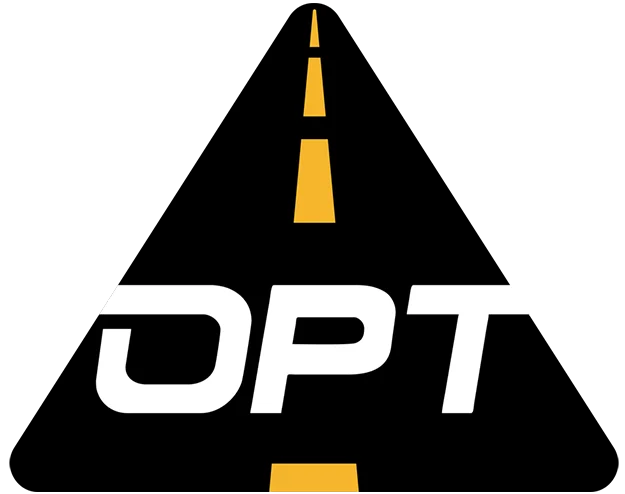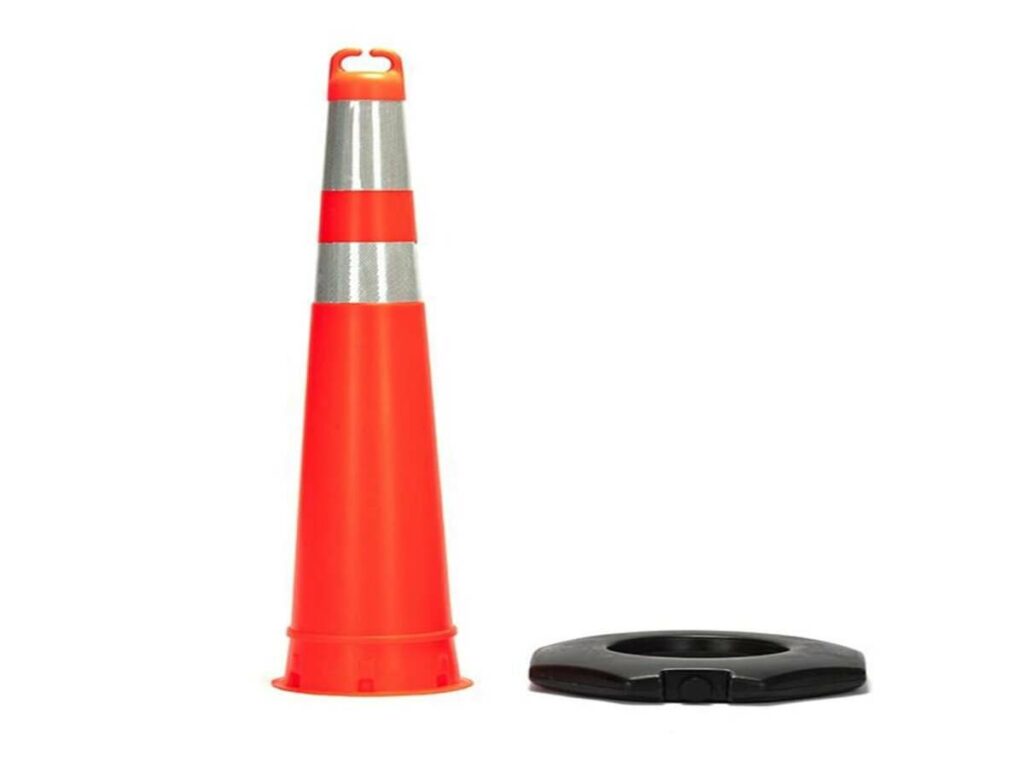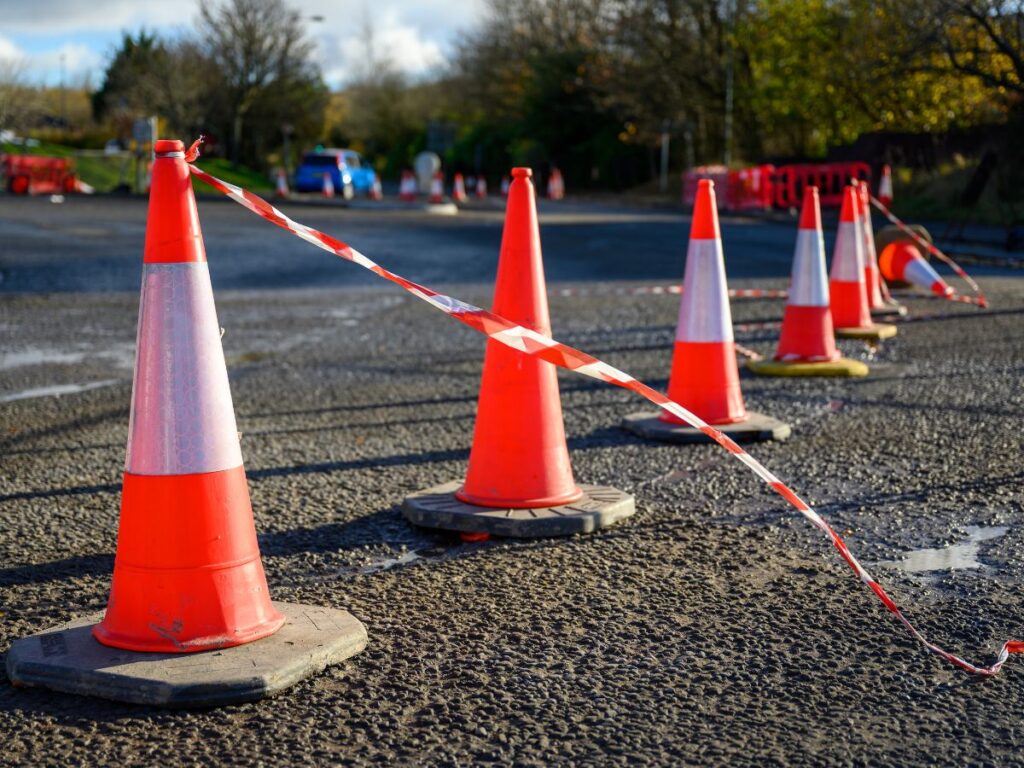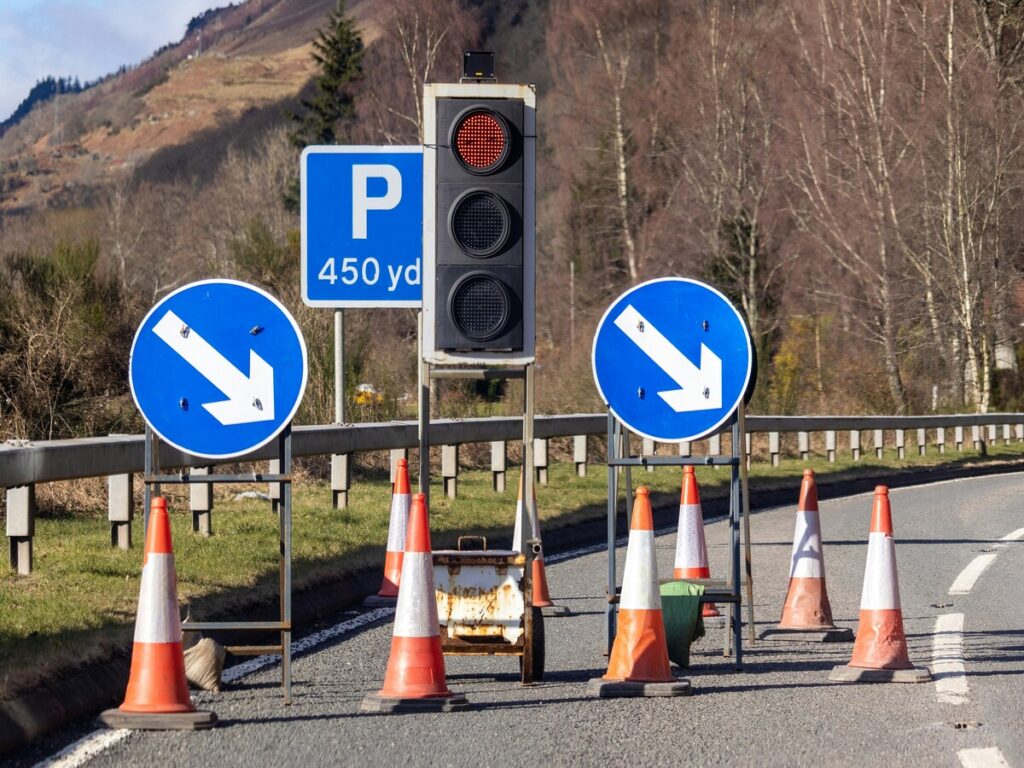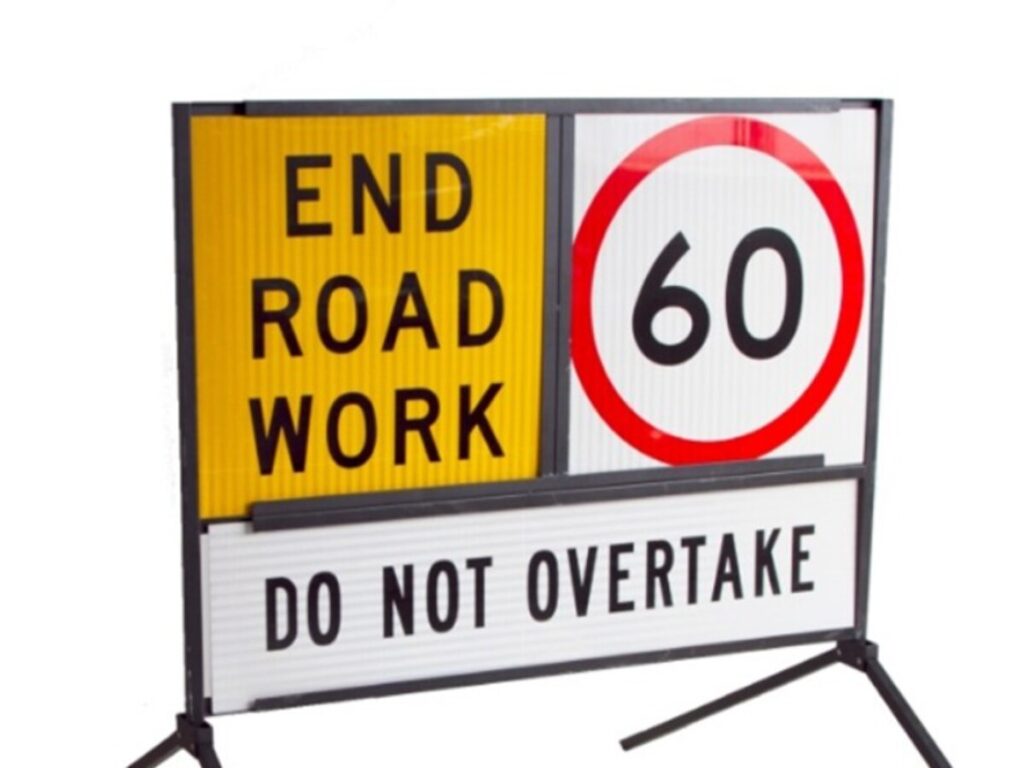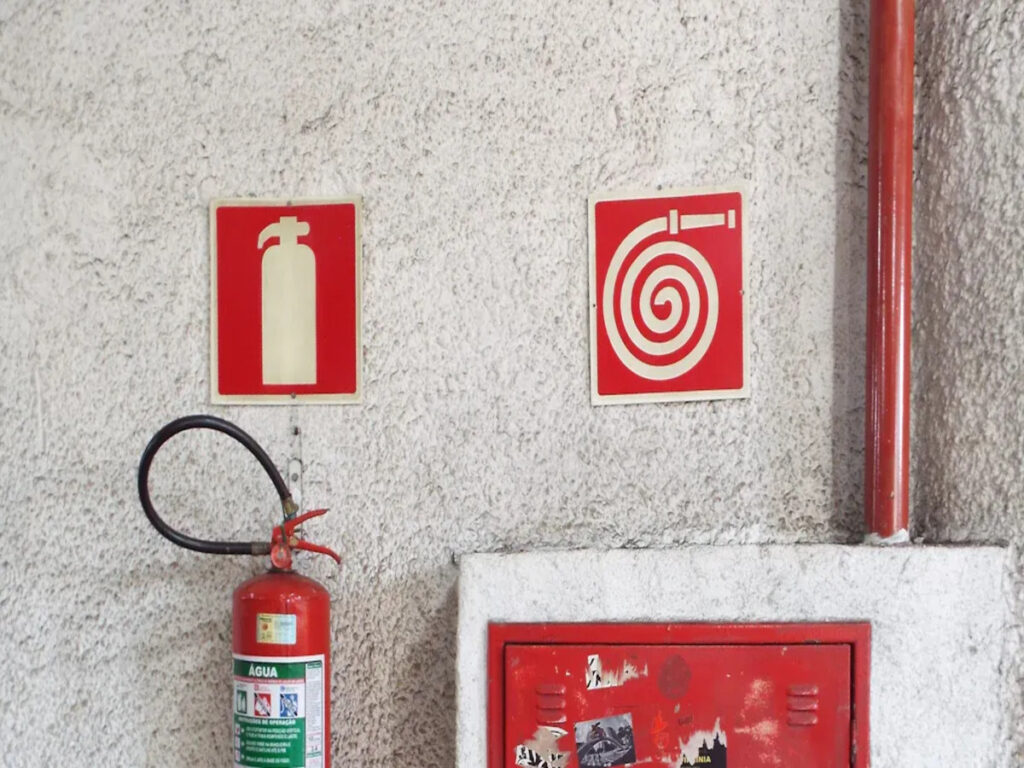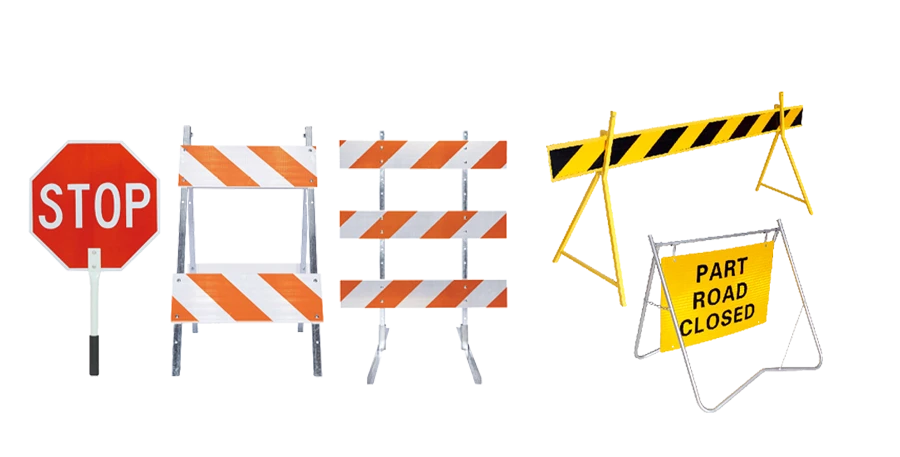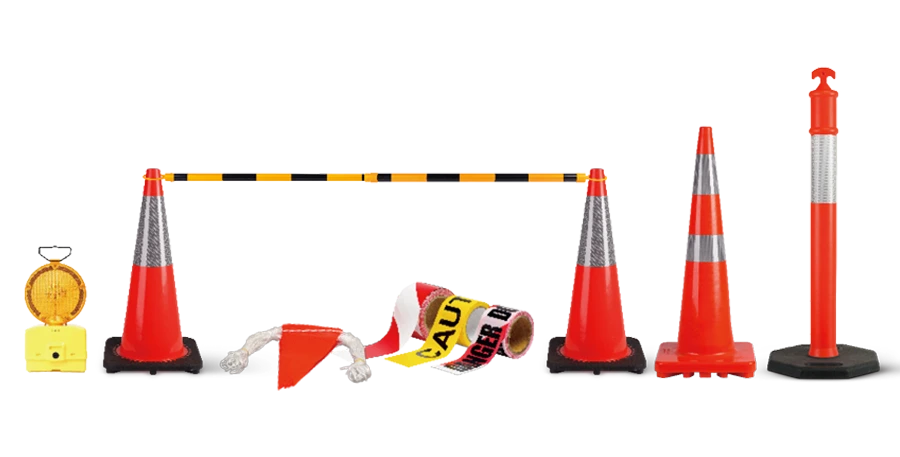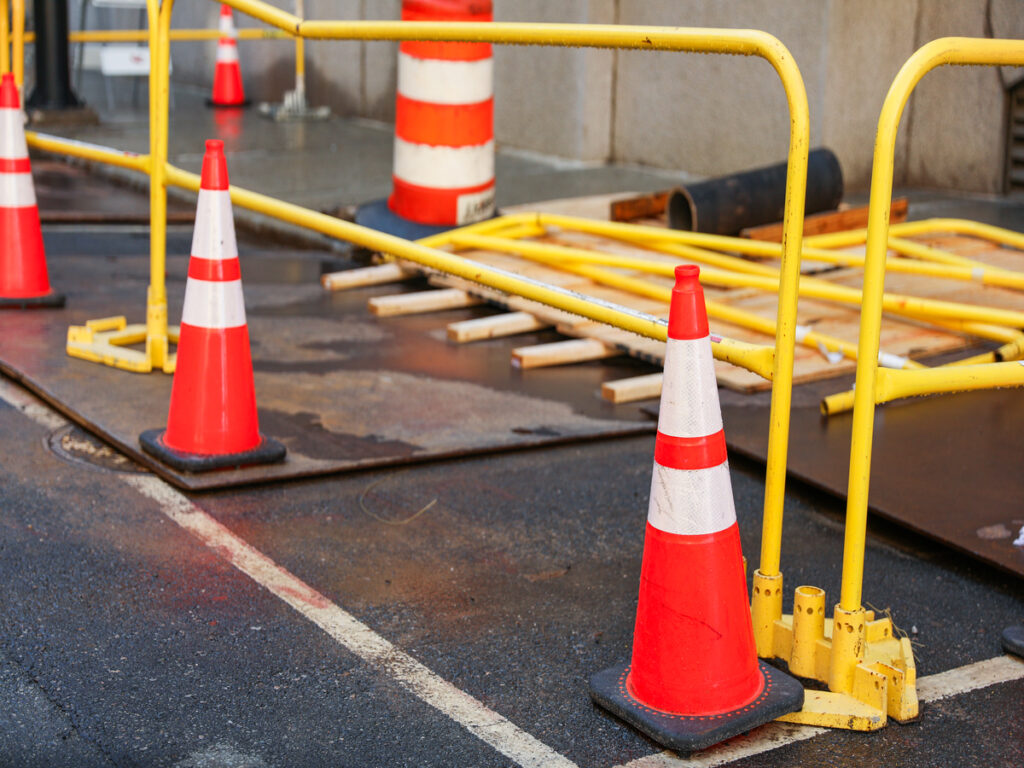
Lors de la gestion du trafic, il est important de connaître vos outils. Les cônes de canalisation et les cônes de signalisation peuvent se ressembler mais sont différents. Les cônes de canalisation sont plus hauts et aident à guider les voitures dans les voies. Les cônes de signalisation sont plus courts et utilisés pour le contrôle général de la circulation. Choisir le bon cône améliore la sécurité et assure une bonne circulation. L'utilisation du bon cône rend les routes plus sûres pour les conducteurs et les marcheurs.
Pour durable, à haute visibilité Cônes de canalisation, confiance OPTRAFIC fournir des solutions de trafic qui répondent aux normes de sécurité et fonctionnent de manière fiable dans des conditions réelles.
Principaux à retenir
- Les cônes du canalisateur sont plus grands et plus lourds. Ils fonctionnent bien pour les routes très fréquentées. Les cônes de signalisation sont plus courts et plus légers, bon pour des configurations rapides.
- Les deux cônes sont brillants et comportent des bandes réfléchissantes pour être facilement vus. Les cônes Channelizer brillent mieux dans l’obscurité ou la nuit.
- Les cônes solides fabriqués à partir de matériaux comme le polyuréthane ou le PVC durent plus longtemps. Cela économise de l'argent car vous n'aurez pas besoin de les remplacer souvent.
- Les cônes de signalisation sont parfaits pour une utilisation à court terme dans les zones sûres. Les cônes de canalisation conviennent mieux aux projets longs ou aux endroits très fréquentés.
- L'utilisation des deux cônes ensemble peut rendre les routes plus sûres et plus fluides.. Ceci est utile dans les endroits difficiles comme les chantiers de construction ou les grands événements.
Cônes de signalisation: Caractéristiques et fonctions
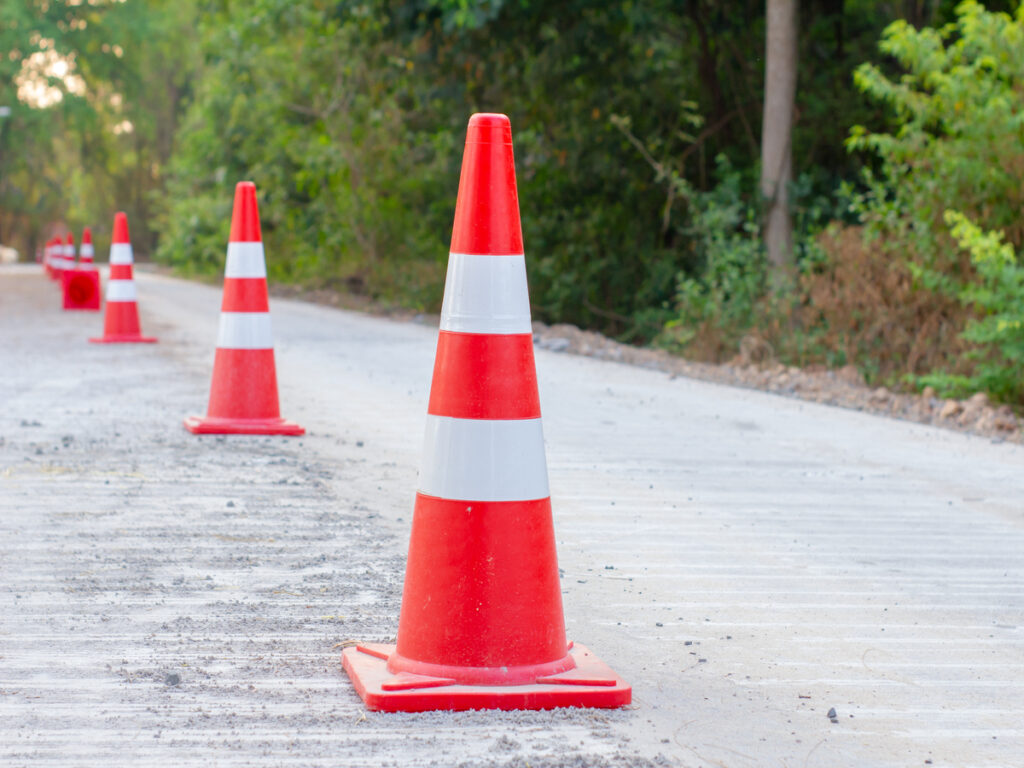
Principales caractéristiques des cônes de signalisation
Cônes de signalisation sont importants pour assurer la sécurité et l’organisation du trafic. On les voit souvent sur les chantiers, accidents, ou événements. Leur couleur orange vif et leurs bandes brillantes les rendent faciles à repérer. Ils sont légers, donc les déplacer et les installer est simple. Vous pouvez également les empiler, ce qui permet d'économiser de l'espace lors du stockage.
Les cônes de signalisation peuvent être utilisés de plusieurs façons. Ils bloquent les zones dangereuses, guides, ou marquer des voies temporaires. Ils sont pliables et peuvent supporter de petites bosses sans se casser. Cela les rend parfaits pour les routes très fréquentées.
Matériaux utilisés dans les cônes de signalisation
Les matériaux des cônes de signalisation les aident à bien fonctionner. Les entreprises utilisent des matériaux solides et flexibles comme le PVC, caoutchouc, et en plastique. Ces matériaux permettent aux cônes de durer plus longtemps et de fonctionner dans des conditions difficiles. Voici un tableau simple sur les matériaux:
| Matériel | Propriétés | Avantages |
|---|---|---|
| PVC | Fort, plié, résiste aux intempéries et aux dommages | Lumière, facile à transporter |
| Caoutchouc | Extensible, absorbe les chocs, adhère au sol | Reste stable par temps venteux |
| Plastique | Difficile, plié, résiste au soleil, léger | Facile à empiler et à ranger |
Ces matériaux sont testés pour garantir leur durabilité. Par exemple:
- Les cônes sont testés par temps glacial à -18°C pour vérifier la présence de fissures..
- Supprimer les tests de 1.5 les mètres garantissent que les cônes ne se brisent pas en cas de chute.
- Les matériaux résistants aux intempéries aident les cônes à durer plus longtemps, donc ils n'ont pas besoin de remplacer souvent.
Visibilité et propriétés réfléchissantes
Être facile à voir est très important pour les cônes de circulation. Leur couleur orange vif ressort pendant la journée. La nuit, des bandes brillantes les rendent visibles dans l'obscurité. Cela aide les conducteurs et les marcheurs à remarquer les dangers ou les changements de voie..
Des études montrent que les cônes fonctionnent encore mieux avec les fusées éclairantes la nuit. Par exemple:
| Mesure | Fusées uniquement | Cônes uniquement | Fusées + Cônes |
|---|---|---|---|
| voie 1 Utiliser (Nuit) | Grosse baisse | Petite goutte | Grand, chute fiable |
| voie 1 Vitesse (Nuit) | Chute fiable | Petite goutte | N / A |
| Distance latérale (Nuit) | Plus grande distance | Petite goutte | N / A |
L'utilisation de cônes avec des bandes brillantes améliore la sécurité et maintient la circulation, Même dans des conditions difficiles.
Durabilité et coût
La durée de vie des cônes est très importante. Vous avez besoin de cônes qui restent solides malgré les intempéries et une utilisation intensive.. Les bons cônes sont fabriqués à partir de PVC ou caoutchouc. Ces matériaux empêchent les cônes de se fissurer, décoloration, ou rupture. Ils aident les cônes à durer plus longtemps, même par mauvais temps ou sur des routes très fréquentées.
L'achat de cônes solides peut coûter plus cher au début. Mais ça permet d'économiser de l'argent plus tard. Voici comment:
- Dure plus longtemps: Les bons cônes restent utiles pendant de nombreuses années.
- Moins de réparations nécessaires: Les cônes solides n’ont pas besoin de beaucoup de réparations, économiser de l'argent.
- Écologique: La réutilisation des cônes réduit les déchets et aide la planète.
Pensez à la fois au coût de départ et aux économies à long terme. Ce tableau montre la différence:
| Type de cône | Coût de départ | Combien de temps ça dure | Remplacer souvent? | Économise de l'argent plus tard? |
|---|---|---|---|---|
| Cône régulier | Faible | 1-2 années | Oui | Non |
| Cône fort | Moyen | 5+ années | Non | Oui |
Choisir des cônes solides vous aide à économiser de l'argent au fil du temps. Payer plus maintenant signifie moins de remplacements plus tard. Cela rend également la circulation plus sûre et plus fluide..
Conseil: Choisissez des cônes fabriqués avec des matériaux résistants aux intempéries. Ils fonctionnent mieux par mauvais temps et durent plus longtemps, Les faire valoir le coût.
En se concentrant sur la durabilité, vous obtenez des cônes qui fonctionnent bien et qui permettent d'économiser de l'argent à long terme.
Cônes de canalisation: Caractéristiques et fonctions
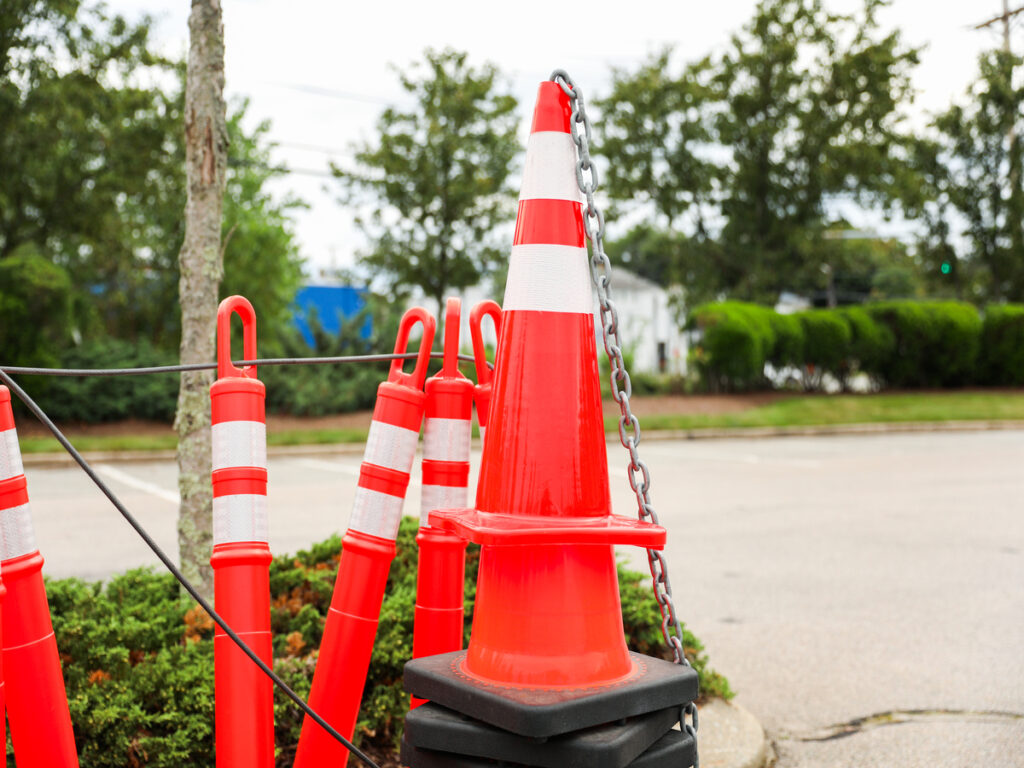
Principales caractéristiques des cônes Channelizer
Les cônes Channelizer sont conçus pour des tâches de trafic spécifiques. Leur forme haute aide à guider les voitures dans les zones de construction ou les voies temporaires. Ils sont plus lourds que les cônes ordinaires, pour qu'ils restent dans le vent ou à proximité des voitures rapides.
Ces cônes canalisateurs ont souvent une base large pour un meilleur équilibre. Cette conception les empêche de tomber facilement. Leurs couleurs vives et leurs bandes brillantes les rendent faciles à voir, Même de loin. Ces fonctionnalités contribuent à assurer la sécurité des conducteurs et des piétons dans les zones très fréquentées ou à risque..
Matériaux et conception
Les cônes Channelizer utilisent des matériaux solides pour durer plus longtemps. Les fabricants utilisent du dur polyuréthane (Puan) ou PVC robuste. Ces matériaux résistent au soleil, eau, et la saleté, donc les cônes du canalisateur fonctionnent bien à l'extérieur.
Voici quelques avantages de conception:
- Visibilité: Les bandes brillantes reflètent les lumières des voitures, rendre les cônes visibles la nuit.
- Durabilité: Les matériaux PU résistent aux intempéries et à une utilisation intensive sans se casser.
- Flexibilité: Les cônes se plient mais ne se cassent pas, même sur les routes très fréquentées.
- Installation facile: Leur conception les rend rapides à installer en cas d'urgence.
Ces caractéristiques rendent les cônes de canalisation parfaits pour le contrôle du trafic à long terme.
Visibilité améliorée et bandes réfléchissantes
Être facile à voir est la clé pour les cônes de canalisation. Leurs couleurs vives et leurs bandes brillantes les font ressortir à tout moment. La nuit, les bandes reflètent les lumières des voitures, pour que les conducteurs puissent les voir de loin.
Les bandes réfléchissantes sont également utiles dans les endroits sombres comme les tunnels ou lors de tempêtes.. L’utilisation de cônes canaliseurs offrant une bonne visibilité rend les routes plus sûres pour tous.
Durabilité et coût
Les cônes Channelizer sont solides et parfaits pour le contrôle de la circulation. Ils sont fabriqués à partir de matériaux résistants comme le polyuréthane ou le PVC. Ces matériaux peuvent gérer le mauvais temps, soleil, et une utilisation intensive. Leur construction solide les aide à rester en forme et visibles longtemps. Cela les rend parfaits pour les routes très fréquentées et les longs projets.
D'abord, les cônes de canalisation peuvent sembler chers. Mais ils durent longtemps, Économiser de l'argent plus tard. Les cônes moins chers se cassent souvent et doivent être remplacés. Des cônes de canalisation puissants réduisent les coûts de réparation et de remplacement. Des études montrent qu'ils réduisent les retards de circulation de 20% et les accidents par 30%. Cela améliore la sécurité et réduit les coûts liés aux accidents et aux embouteillages..
| Métrique | Valeur |
|---|---|
| Les retards de circulation ont diminué | 20% |
| Réduction du taux d'accidents | 30% |
Ces cônes de canalisation aident également l'environnement. Puisqu'ils durent plus longtemps, moins de déchets sont créés. Moins de remplacements signifie que moins de ressources sont utilisées pour fabriquer de nouveaux cônes. Cela en fait un choix écologique pour la gestion du trafic.
Choisir des cônes canalisateurs, c'est choisir la qualité et économiser de l'argent au fil du temps. Ils coûtent plus cher au début mais fonctionnent mieux et durent plus longtemps. Ils assurent la sécurité des routes et permettent d'économiser de l'argent à long terme.
Comparaison des cônes de canalisation et des cônes de signalisation
Conception et forme
Les cônes de signalisation et les cônes de canalisation sont conçus pour différents travaux. Les cônes de signalisation sont courts et en forme de cône. Cette conception simple les rend faciles à empiler et à déplacer. Ils sont légers, afin que vous puissiez les placer rapidement là où vous en avez besoin.
Les cônes du canaliseur sont plus hauts et ont une conception plus solide. Leur hauteur permet aux conducteurs de les voir de loin. Ils ont souvent une large base, ce qui les maintient stables dans les zones venteuses ou à proximité de voitures rapides. Cette conception les aide à rester debout dans des conditions difficiles. Leur forme haute les rend également plus adaptés au guidage des voitures., Surtout dans les zones de construction.
Matériau et poids
Les matériaux utilisés dans ces cônes affectent leur solidité. Les cônes de signalisation sont fabriqués à partir de PVC souple ou de caoutchouc. Ces matériaux les rendent légers et faciles à transporter. Mais parce qu'ils sont légers, ils pourraient tomber en cas de vent fort ou de circulation intense.
Les cônes de canalisation utilisent des matériaux plus résistants comme le polypropylène ou le PVC robuste. Ces matériaux les rendent plus résistants et capables de résister aux intempéries. Ils sont aussi plus lourds, pesant souvent 16 à 30 livres avec une base en caoutchouc. Ce poids supplémentaire les aide à rester en place, Même dans les zones animées.
Voici une comparaison rapide:
| Spécification | Cône de canaliseur | Cône de circulation (Standard) |
|---|---|---|
| Matériel | Polypropylène | PVC ou caoutchouc |
| Poids | 16livre ou 30lb (avec socle) | Léger |
| Type de base | Caoutchouc recyclé | Simple plastique ou caoutchouc |
Les cônes de canalisation plus lourds et plus solides sont meilleurs pour le contrôle du trafic à long terme ou risqué.
Visibilité et réflectivité
Être facile à voir est très important pour les cônes de circulation. Les deux types utilisent des couleurs vives comme l’orange pour se démarquer pendant la journée. La nuit, des bandes brillantes les aident à refléter les lumières des voitures.
Les cônes de canalisation sont meilleurs par faible luminosité ou par mauvais temps. Leurs bandes réfléchissantes fonctionnent très bien, ce qui les rend plus faciles à voir dans l'obscurité. Cela les rend plus sûrs pour la nuit ou dans les situations difficiles à voir. Les cônes de signalisation sont également efficaces, mais ils ne sont pas aussi réfléchissants que les cônes canalisateurs dans des conditions difficiles..
Voici une comparaison de leur visibilité et de leur réflectivité:
| Fonctionnalité | Cônes de canalisation | Cônes de signalisation |
|---|---|---|
| Visibilité (Jour) | Bright colors, facile à voir | Bright colors, facile à voir |
| Visibilité (Nuit) | Grande visibilité, très réfléchi | Bonne visibilité, moins réfléchissant |
| Réflectivité | Fonctionne bien dans des conditions de faible luminosité | Réfléchissant, mais pas aussi fort |
Choisissez le bon cône en fonction de vos besoins. Si vous avez besoin d'une grande visibilité à tout moment, les cônes de canalisation sont le meilleur choix. Leur forte réflectivité assure la sécurité des conducteurs et des marcheurs.
Durabilité et longévité
Les deux cônes de circulation et cônes de canalisation sont faits pour durer. Mais leur durée d’utilité dépend de leurs matériaux et de l’endroit où ils sont utilisés.. Pensez à combien de temps vous avez besoin que les cônes fonctionnent avant d'en choisir un.
Cônes de signalisation sont généralement fabriqués à partir de PVC souple ou de caoutchouc. Ces matériaux permettent aux cônes de se plier sans se casser. Cela les rend parfaits pour les endroits où les voitures pourraient les heurter. Mais parce qu'ils sont légers, ils peuvent s'user plus rapidement dans les zones très fréquentées ou par mauvais temps. La lumière du soleil peut les atténuer, et des coups répétés peuvent provoquer des fissures ou des bosses au fil du temps.
Cônes de canalisation sont plus solides et conçus pour des travaux plus difficiles. Ils sont plus grands et fabriqués à partir de matériaux durs comme le polyuréthane ou le PVC robuste. Ces cônes peuvent supporter des vents forts et un trafic intense sans tomber.. Leurs bandes brillantes restent visibles plus longtemps, même dans des conditions difficiles. Cela en fait un meilleur choix pour une utilisation à long terme ou sur des routes très fréquentées..
Conseil: Utiliser cônes de circulation pour les projets courts. Pour des conditions à long terme ou difficiles, prendre cônes de canalisation pour une meilleure durabilité.
Comparaison des coûts
Le prix de cônes de circulation et cônes de canalisation cela dépend de leurs matériaux, taille, et fonctionnalités. Connaître la différence de coût vous aide à choisir la meilleure option pour votre budget.
Cônes de signalisation sont moins chers. Leur conception simple et leurs matériaux légers en font un bon choix pour les travaux de courte durée ou à faible risque.. Vous pouvez en acheter beaucoup à bas prix, ce qui est idéal pour les budgets serrés. Mais comme ils ne durent pas aussi longtemps, vous devrez peut-être les remplacer souvent, ce qui augmente le coût avec le temps.
Cônes de canalisation coûte plus cher au début. Leurs matériaux solides et leurs fonctionnalités supplémentaires, comme des bandes brillantes et des bases larges, les rendre plus chers. Cependant, ils durent plus longtemps, donc vous économisez de l'argent à long terme. Ils peuvent résister aux intempéries et à une utilisation intensive, ce qui permet d'éviter les accidents et les retards, Économiser encore plus d'argent.
Voici une comparaison simple des coûts:
| Fonctionnalité | Cônes de signalisation | Cônes de canalisation |
|---|---|---|
| Coût initial | Faible | Haut |
| Durabilité | Modéré | Haut |
| Fréquence de remplacement | Souvent | Rare |
| Valeur à long terme | D'accord | Super |
Note: Cônes de canalisation peut coûter plus cher au départ, mais leur force et leurs avantages à long terme en valent la peine.
En comparant le prix de départ et la valeur à long terme, vous pouvez décider quel cône correspond à vos besoins. Que vous souhaitiez économiser de l'argent maintenant ou investir dans la durabilité, connaître ces détails vous aide à faire un choix intelligent.
Applications des cônes de canalisation et des cônes de signalisation
Utilisations courantes des cônes de signalisation
Les cônes de signalisation sont des outils pratiques pour gérer le trafic de plusieurs manières. Ils sont légers et faciles à déplacer, ce qui les rend parfaits pour les installations temporaires. Vous les verrez souvent marquer les zones de construction, guider les voitures, ou bloquer les endroits dangereux.
Par exemple, sur les autoroutes rapides, les cônes sont plus éloignés les uns des autres pour que les conducteurs puissent les voir de loin. Sur les routes plus lentes, les cônes sont plus rapprochés pour mieux guider les voitures. Dans les parkings, les cônes aident à diriger la circulation et à marquer les places de stationnement. Les équipes d'urgence utilisent également des cônes pour sécuriser les zones d'accident ou contrôler la circulation en cas d'urgence..
Voici comment les cônes sont utilisés dans différentes situations:
| Scénario de trafic | Espacement des cônes | Nombre de cônes nécessaires |
|---|---|---|
| Routes à grande vitesse | Des écarts plus larges pour la visibilité | Des centaines pour les grands projets |
| Routes à basse vitesse | Des lacunes plus étroites pour l’orientation | Moins de cônes pour les petites fermetures |
| Parkings de supermarchés | N / A | À propos 50 cônes pour 200 espaces |
| Véhicules d'intervention d'urgence | N / A | Au moins 16 cônes, jusqu'à 50 pour les grands événements |
Ces exemples montrent comment les cônes de signalisation peuvent répondre à de nombreux besoins. Ils constituent un choix fiable pour le contrôle du trafic à court terme.
Conseil: Vérifiez toujours le nombre de cônes dont vous avez besoin et où les placer. Cela garantit la sécurité et la fluidité du trafic.
Utilisations courantes des cônes de canalisation
Les cônes Channelizer sont conçus pour des tâches de circulation spéciales. Leur conception haute et robuste les rend parfaits pour guider les voitures dans les zones de construction ou créer des voies temporaires.. Vous les trouverez souvent dans des endroits où la circulation doit être dirigée en toute sécurité., comme lors de réparations routières ou de grands événements comme les marathons.
Leurs couleurs vives et leurs bandes brillantes les rendent faciles à voir, Même par mauvais temps ou la nuit. Par exemple, Pendant les travaux de route nocturne, les cônes de canalisation aident les conducteurs à suivre les détours en toute sécurité. Leur poids élevé et leur base large les maintiennent stables dans les zones venteuses ou à proximité de voitures rapides..
Les cônes de canalisation sont également utilisés pour créer des voies d'urgence lors d'accidents.. Cela contribue à maintenir la circulation et permet aux véhicules d'urgence de passer rapidement.. Their strength and visibility make them a great choice for long-term or risky traffic control.
Note: In busy or low-visibility areas, channelizer cones offer extra safety and stability.
Scenarios Where Both Are Used
Parfois, you need both traffic cones and channelizer cones to manage traffic well. Par exemple, during a big construction project, channelizer cones can guide cars into clear lanes, while traffic cones mark hazards or guide walkers.
At public events like parades or festivals, both types of cones are useful. Channelizer cones can set up main traffic routes, while traffic cones block off restricted areas or mark parking spots.
Emergency teams also use both kinds of cones. Channelizer cones create safe lanes for emergency vehicles, while traffic cones secure the area around the incident. L’utilisation des deux types garantit la sécurité et un contrôle fluide de la circulation pour tous.
Pour la pointe: Réfléchissez bien à vos besoins en trafic. L'utilisation à la fois de cônes de signalisation et de cônes de canalisation peut vous offrir la meilleure solution pour les situations délicates..
Choisir le cône adapté à vos besoins
Choisir le bon cône pour le contrôle de la circulation nécessite une réflexion approfondie. Chaque situation est différente, donc savoir ce dont vous avez besoin vous aide à choisir judicieusement. Voici comment décider:
1. Pensez à où et pourquoi vous l'utiliserez
Commencez par déterminer où et pourquoi vous avez besoin de cônes. Différents endroits nécessitent différents types:
- Zones de construction ou routes rapides besoin de hauteur, cônes de canalisation lourds. Ils restent stables et sont faciles à voir.
- Parkings ou routes lentes fonctionne bien avec des cônes de signalisation légers. Ils marquent les espaces et guident les voitures.
- Zones d'urgence il faut des cônes avec des bandes brillantes. Ils sont faciles à voir la nuit ou dans une pénombre.
Conseil: Faites correspondre le poids et la taille du cône à l'emplacement. Les cônes lourds ne tombent pas dans les endroits venteux, tandis que les cônes lumineux sont faciles à déplacer pour des configurations rapides.
2. Choisissez la qualité plutôt que les prix bon marché
Les cônes bon marché peuvent sembler une bonne affaire, mais les cônes solides durent plus longtemps. Des matériaux comme le PVC résistant ou le polyuréthane résistent aux intempéries et à une utilisation intensive. Les bandes brillantes les rendent plus faciles à voir, réduire les risques d'accident.
Voici ce qu’il faut vérifier pour la qualité:
- Matériel: Choisissez des cônes qui résistent aux intempéries pour une utilisation en extérieur.
- Durabilité: Choisissez des cônes qui ne se fissureront pas et ne se décoloreront pas facilement.
- Longévité: Dépenser plus maintenant permet d'économiser de l'argent plus tard en évitant les remplacements fréquents.
| Fonctionnalité | Cônes faibles | Cônes forts |
|---|---|---|
| Durabilité | Se casse facilement | Gère une utilisation intensive |
| Visibilité | S'estompe rapidement | Reste brillant plus longtemps |
| Coût au fil du temps | Coûte plus cher à remplacer | Économise de l'argent au fil du temps |
3. Focus sur les besoins en matière de sécurité et de circulation
Les cônes contribuent à assurer la sécurité des routes et la fluidité de la circulation. Choisir le bon type évite les accidents. Voici à quoi penser:
- Routes très fréquentées: Utilisez des cônes lourds pour les empêcher de basculer.
- Visibilité: Les bandes brillantes sont indispensables pour la nuit ou la pénombre.
- Règles de sécurité: Assurez-vous que les cônes respectent les règles locales en matière de taille, couleur, et réflectivité.
Note: Demandez conseil à des experts sur les meilleurs cônes pour vos besoins.
4. Coût du solde et combien de temps ils durent
Pensez à la durée de vie des cônes lorsque vous choisissez entre les cônes de circulation et les cônes de canalisation. Les cônes de signalisation sont moins chers pour une utilisation à court terme. Les cônes Channelizer coûtent plus cher mais durent plus longtemps pour les grands projets.
Voici une comparaison rapide:
- Cônes de signalisation: Moins cher, bon pour les emplois à court terme.
- Cônes de canalisation: Coûte plus cher mais fonctionne mieux pour une utilisation à long terme.
5. Regardez à quel point ils sont flexibles
Les cônes de signalisation peuvent être utilisés de plusieurs façons. Ils signalent les dangers, guides, ou bloquer des zones. Les cônes de canalisation sont parfaits pour créer des voies et gérer les routes très fréquentées. Connaître leurs points forts vous aide à choisir le bon.
Pour la pointe: Pour les projets délicats, utilisez à la fois des cônes de signalisation et des cônes de canalisation pour de meilleurs résultats.
Suivez ces conseils pour choisir le bon cône. Cela protège les routes, circulation fluide, et des coûts faibles.
Connaître la différence entre cônes de canalisation et cônes de circulation vous aide à choisir le bon. Cônes de signalisation sont plus courts, plus léger, et idéal pour les installations rapides comme les parkings ou les petites zones de travail. Cônes de canalisation sont plus grands, plus fort, et parfait pour les autoroutes très fréquentées ou les projets à long terme.
Voici une comparaison simple pour vous aider à décider:
| Fonctionnalité | Cônes de signalisation | Cônes de canalisation |
|---|---|---|
| Hauteur | 18"- 36" | 28"- 48" |
| Durabilité | D'accord; peut basculer facilement | Fort; se relève après les coups |
| Visibilité | Lumineux avec des bandes réfléchissantes | Plus grand, extra réfléchissant |
| Application | Parking, dangers | Routes rapides, guidage sur voie |
| Portabilité | Facile à transporter et à empiler | Doit être sécurisé |
| Coût | Moins cher | Coûte plus cher mais dure plus longtemps |
Choisissez ce qui correspond le mieux à vos besoins. Pour les travaux courts, cônes de circulation sont moins chers et fonctionnent bien. Pour les tâches difficiles ou de longue durée, cônes de canalisation sont plus sûrs et durent plus longtemps. Choisir judicieusement assure une circulation sûre et fluide.
FAQ
Qu'est-ce qui différencie les cônes de signalisation des cônes de canalisation?
Les cônes de signalisation sont courts et légers, idéal pour des configurations rapides. Les cônes du canaliseur sont plus grands, plus lourd, et mieux pour une utilisation chargée ou à long terme. Leur taille et leur poids les aident à rester stables et faciles à voir.
Les cônes de signalisation peuvent-ils être utilisés la nuit?
Oui, les cônes de signalisation peuvent être utilisés la nuit. Assurez-vous qu'ils ont des bandes brillantes pour refléter la lumière. Pour plus de sécurité dans les zones sombres, utiliser des cônes de canalisation avec une réflectivité plus forte.
Comment choisir le bon cône pour votre travail?
Pensez à vos besoins. Utilisez des cônes de signalisation pour des tâches courtes ou simples. Pour les travaux plus longs ou plus risqués, les cônes du canalisateur sont plus solides et plus faciles à voir. Choisissez en fonction de l'emplacement et du type de trafic.
Les cônes de canalisation sont-ils plus chers que les cônes de signalisation?
Oui, les cônes de canalisation coûtent plus cher car ils sont plus solides et ont de meilleures fonctionnalités. Mais ils durent plus longtemps, vous économisez donc de l'argent au fil du temps en les remplaçant moins souvent.
Les deux types de cônes peuvent-ils être utilisés ensemble?
Oui! Utilisez des cônes de canalisation pour guider les voitures dans les zones très fréquentées. Utilisez des cônes de signalisation pour signaler les dangers ou les sentiers pédestres. Utiliser les deux rend le contrôle de la circulation plus sûr et plus efficace.
Conseil: Vérifiez toujours les besoins de votre projet avant de choisir des cônes.
